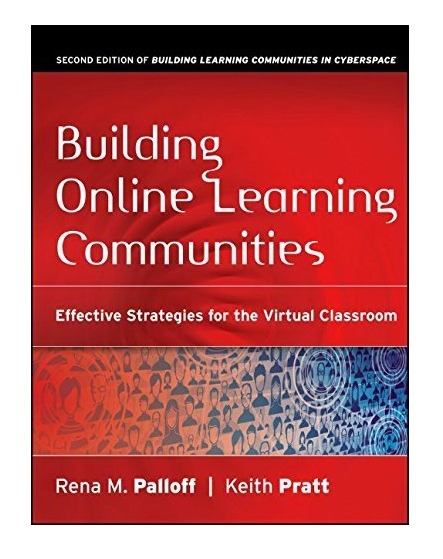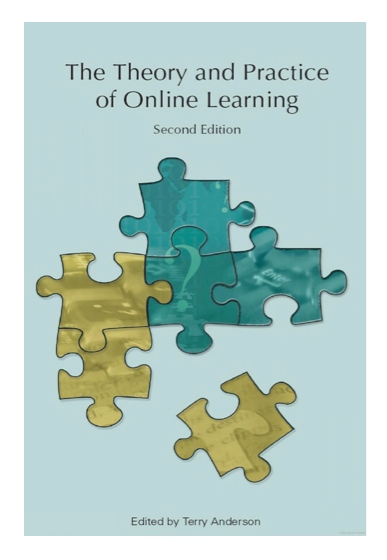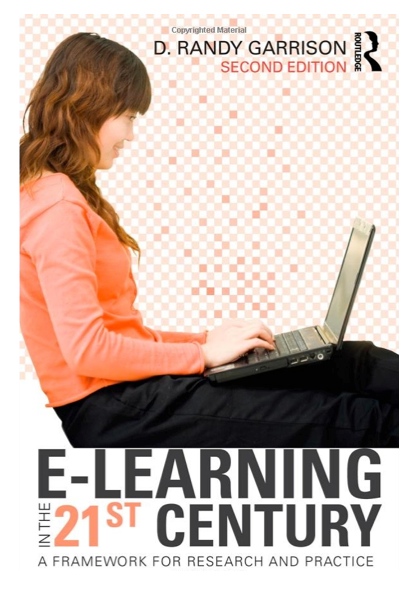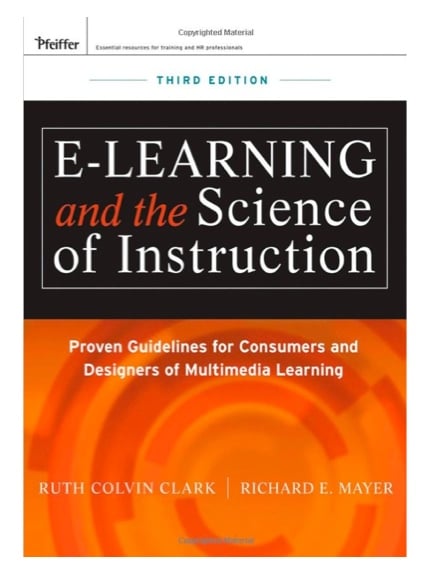Monty Jones at VCU emailed several of us today with an interesting thought query from Brianne Adams:
What are the seminal texts in online education? Given how fast the field has evolved, are there any?
I have been evolved with online education for two decades, and along the way, there were books that had a huge impact on me, so I do believe there are “seminal texts.” They were not the first books on online teaching and learning, but they were five books that stay in my mind.
 The first book that really impacted my teaching online was the 2007 Building Online Learning Communities: Effective Strategies for the Virtual Classroom by Rena Palloff and Keith Pratt. I had read several “how-to” books like Susan Ko’s Teaching Online: A Practical Guide (now in its Third Edition), but Rena and Keith’s book solidified for me the learning community aspect of elearning. I had just shifted from directing an online program at Gwinnett Tech (and teaching several business management classes) to faculty development at VCU’s Center for Teaching Excellence, so Rena and Keith’s book hit at just the right moment for me.
The first book that really impacted my teaching online was the 2007 Building Online Learning Communities: Effective Strategies for the Virtual Classroom by Rena Palloff and Keith Pratt. I had read several “how-to” books like Susan Ko’s Teaching Online: A Practical Guide (now in its Third Edition), but Rena and Keith’s book solidified for me the learning community aspect of elearning. I had just shifted from directing an online program at Gwinnett Tech (and teaching several business management classes) to faculty development at VCU’s Center for Teaching Excellence, so Rena and Keith’s book hit at just the right moment for me.
Using case studies, vignettes, and examples from successful online courses, Rena and Keith provided a mix of theory and practical ways to handle challenges such as engaging students to build an online learning community, establishing a sense of presence online, maximizing participation, increasing collaboration and reflection, and effectively assessing student performance. During the four years in which I coordinated VCU’s Online Course Development Initiative, this was the book we gave all participants.
 The second book that comes to mind is Terry Anderson’s 2009 The Theory and Practice of Online Learning (2nd Edition). This edited collection of chapters on theory, design, and support of online learning provides background and context around the Community of Inquiry framework, which Anderson and others developed. The Community of Inquiry framework was developed during a Canadian Social Sciences and Humanities research funded project which ran from 1997 to 2001. The framework focused on the social, technological, and pedagogic processes that could lead to collaborative knowledge construction in online learning environments. This framework was extensively researched over the past 15 years, exploring the three forms of ‘‘presence” -teaching, social, and cognitive presence.
The second book that comes to mind is Terry Anderson’s 2009 The Theory and Practice of Online Learning (2nd Edition). This edited collection of chapters on theory, design, and support of online learning provides background and context around the Community of Inquiry framework, which Anderson and others developed. The Community of Inquiry framework was developed during a Canadian Social Sciences and Humanities research funded project which ran from 1997 to 2001. The framework focused on the social, technological, and pedagogic processes that could lead to collaborative knowledge construction in online learning environments. This framework was extensively researched over the past 15 years, exploring the three forms of ‘‘presence” -teaching, social, and cognitive presence.
I used Terry’s book as my textbook in my hybrid course on the Theory of Online Learning that I taught for VCU. The second edition brought in the concept of connectivism as a theory, as well as the use of social media for networked learning.
The third book builds on this framework of the Community of Inquiry.
 Randy Garrison, another contributor to the CoI, published his second edition of E-Learning in the 21st Century: A Framework For Research and Practice in 2010. Randy synthesized a decade of research into the Community of Inquiry model for online learning. Our CTE team spent a semester reviewing this book and related research around the Community of Inquiry, such as an article by Karen Swan, Randy Garrison, and Jennifer Richardson in 2009 – “A Constructivist Approach to Online Learning: The Community of Inquiry Framework.” The CoI factored in to the design of VCU’s Preparing to Teach Online course back in the last decade, as well as their year-long Online Course Development Initiative. From Randy’s perspective, learning is shaped by a collaborative constructivist view, with discourse inseparable from critical thinking. Critical thinking is both highly individualistic and shared…we co-construct our knowledge with others. This connected learner framework has certainly informed the design of my courses.
Randy Garrison, another contributor to the CoI, published his second edition of E-Learning in the 21st Century: A Framework For Research and Practice in 2010. Randy synthesized a decade of research into the Community of Inquiry model for online learning. Our CTE team spent a semester reviewing this book and related research around the Community of Inquiry, such as an article by Karen Swan, Randy Garrison, and Jennifer Richardson in 2009 – “A Constructivist Approach to Online Learning: The Community of Inquiry Framework.” The CoI factored in to the design of VCU’s Preparing to Teach Online course back in the last decade, as well as their year-long Online Course Development Initiative. From Randy’s perspective, learning is shaped by a collaborative constructivist view, with discourse inseparable from critical thinking. Critical thinking is both highly individualistic and shared…we co-construct our knowledge with others. This connected learner framework has certainly informed the design of my courses.
One aspect of Randy’s book I like is the holistic look at the interplay of all three presences together. Not only does the influences shift between them, but they also shift over time within a course and beyond a course. The “learning” might kick in two to three courses later as continued integration and resolution occur.
 My fourth “go to” book is by Ruth Clark and Richard Mayer, who in 2011 published the Third Edition of E-Learning and the Science of Instruction. This book not only looks at the science of learning, but it brings in Richard Mayer’s concepts of dual channel learning with multimedia. Mayer has researched how our minds process information from both visual and audio channels. He found that students learn better when material is presented with both words and images, when information is provided in smaller chunks to prevent cognitive overload, when words and images are integrated within a presentation, and when information is presented in a conversational style. His work has informed much of our Online Course Design Orientation Program here at Northeastern University.
My fourth “go to” book is by Ruth Clark and Richard Mayer, who in 2011 published the Third Edition of E-Learning and the Science of Instruction. This book not only looks at the science of learning, but it brings in Richard Mayer’s concepts of dual channel learning with multimedia. Mayer has researched how our minds process information from both visual and audio channels. He found that students learn better when material is presented with both words and images, when information is provided in smaller chunks to prevent cognitive overload, when words and images are integrated within a presentation, and when information is presented in a conversational style. His work has informed much of our Online Course Design Orientation Program here at Northeastern University.
 My final go-to book is a recent addition that I have blogged about before – Michelle Miller’s 2014 Minds Online: Teaching Effectively with Technology. Michelle’s book is one of the first books to tie what we know about how people learn to online learning. I am currently using this book as the textbook in my latest online course – EDU 6323: Technology as a Medium for Learning.
My final go-to book is a recent addition that I have blogged about before – Michelle Miller’s 2014 Minds Online: Teaching Effectively with Technology. Michelle’s book is one of the first books to tie what we know about how people learn to online learning. I am currently using this book as the textbook in my latest online course – EDU 6323: Technology as a Medium for Learning.
There are a ton of other books and articles out on aspects of elearning (such as Tisha Bender’s (2012) Discussion-Based Online Teaching to Enhance Student Learning), but the five above are my go to volumes. This is also does not begin to scratch the surface of books on learning science, such as Susan Ambrose’s How Learning Works.
It would be interesting to hear from you as to what you consider seminal works. What would you add to this list?